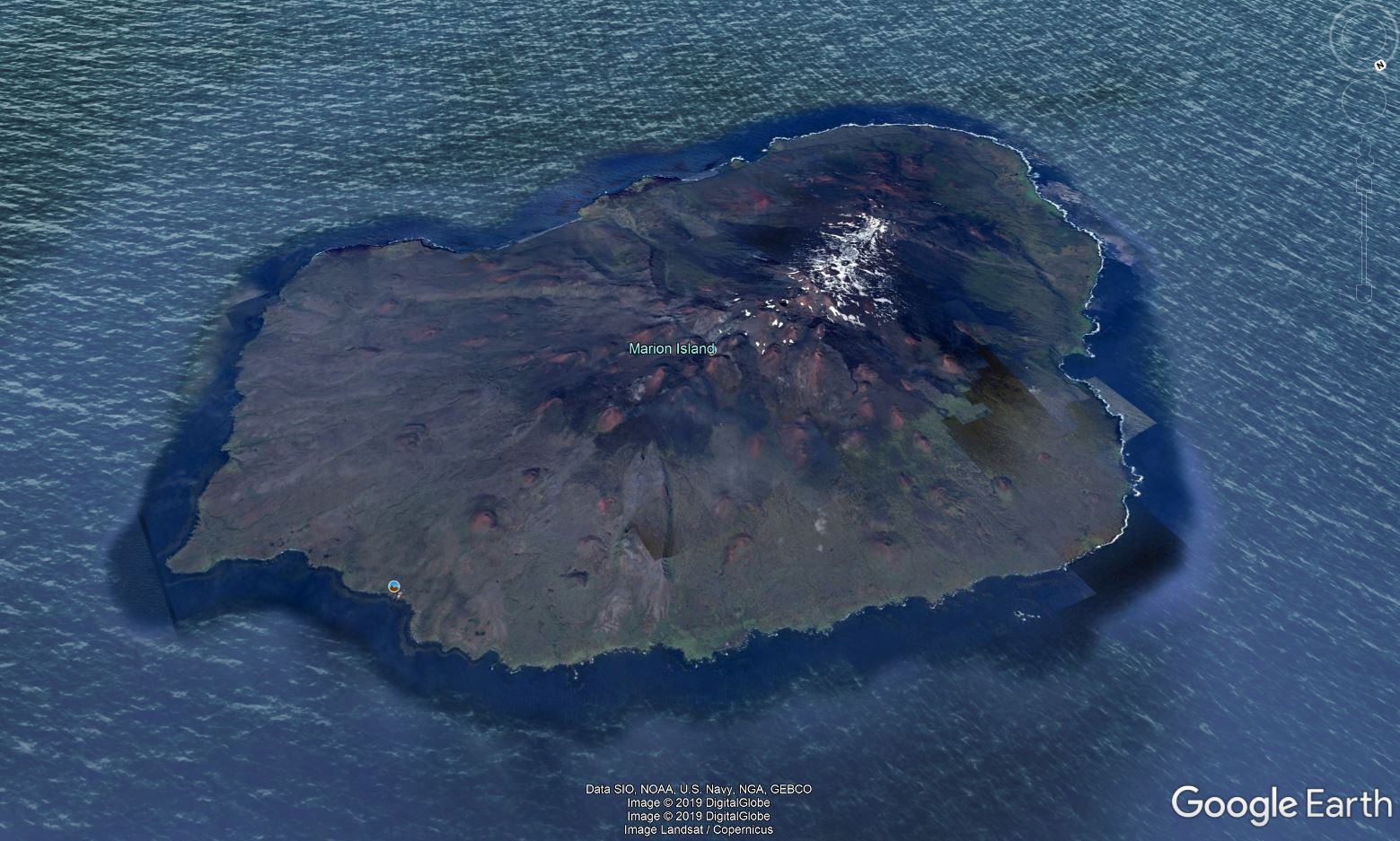How did Marion Rise get its name? It’s named after nearby Marion Island, which is one of the two Prince Edward Islands in the southern Indian Ocean about 1,200 miles southeast of Cape Town, South Africa. Except for a meteorological station established on Marion Island in 1948, the island is uninhabited.
Marion Island- Google Earth
Marion Base is part of the South African National Antarctic Programme. It focuses on biological, environmental and meteorological research. There is an emphasis on the study of seals and birds, particularly penguins, petrels, albatrosses and gulls. It is home to five varieties of albatross. One environmental focus is the eradication of invasive species. The island was infested with mice from early ship visits. Later, cats were introduced to control the mice. The cats reproduced like crazy and were decimating the bird populations, so a cat control program came next. Now that cats are under control, mice are taking over again, and the mice are eating chicks out of the bird nests.
Wandering Albatross- juvenile
Yellow nosed albatross
Marion Island is the top of a large underwater shield volcano at the juncture between two tectonic plates, the African and Antarctic Plates, which rises 5,000 meters from the ocean floor to Mascarin Peak, the highest point on Marion Island. This active volcano erupted in 1980 and 2004 and has been volcanically active for over 18,000 years. Marion Island is about 25 km wide with an area of about 300 km2. The coastline is exposed and rugged with steep 150-meter cliffs. Mascarin Peak rises 1,200 meters from sea level. The climate is cool and stormy with prevailing westerly winds that bring heavy rain and snow. It rains 320 days per year – about 28 days of rain each month!
Marion Island is a tiny dot compared to Marion Rise which extends for over 3,000 km along the southwest Indian Ridge with an area of millions of square kilometers. One of the oceanic core complexes discovered by this cruise is 20 km wide, nearly as large as Marion Island!
Wet and chilly is fine by me, but I wouldn’t like the wind!
The location of Marion Island with respect to the Marion Rise (dashed, red ellipse) and our study area (black square).
Sally











